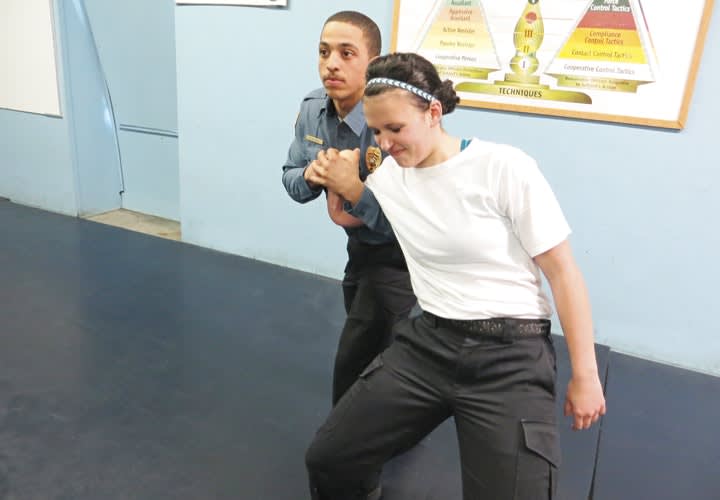Again, all techniques are best used with two officers vs. one arrestee. The keys to good control using the gooseneck control include: maintaining a good grip, pulling the arrestee off balance, controlling the forearm, and manipulating the wrist for pain compliance.
To gain control of an arrestee using the gooseneck control, step back slightly and quickly pull the arrestee off balance, bringing the arrestee's elbow downward and his forearm into your center. The arrestee's forearm should be positioned below your head and you should keep as much of his forearm against your chest as possible. You should then place both hands on the arrestee's hand in such a position that his wrist can be manipulated downward in order to gain pain compliance.
Once compliance is gained it is important to continue some pressure for control. You should then bring your outside hand down to the arrestee's elbow, controlling the arrestee's elbow against the officer's body. Now step beside the arrestee and work the arrestee's wrist behind his back without losing control. This can be done by keeping the arrestee's arm bent as much as possible and not allowing the arrestee's elbow to move upward.
Knee Strike
If you are unable to manipulate the arrestee's arm into a control hold due to his resistance, you have the option of a knee strike to the common peroneal nerve just above and outside the knee. This can be used as a distraction technique, and it can also cause the arrestee to drop to his knees.











